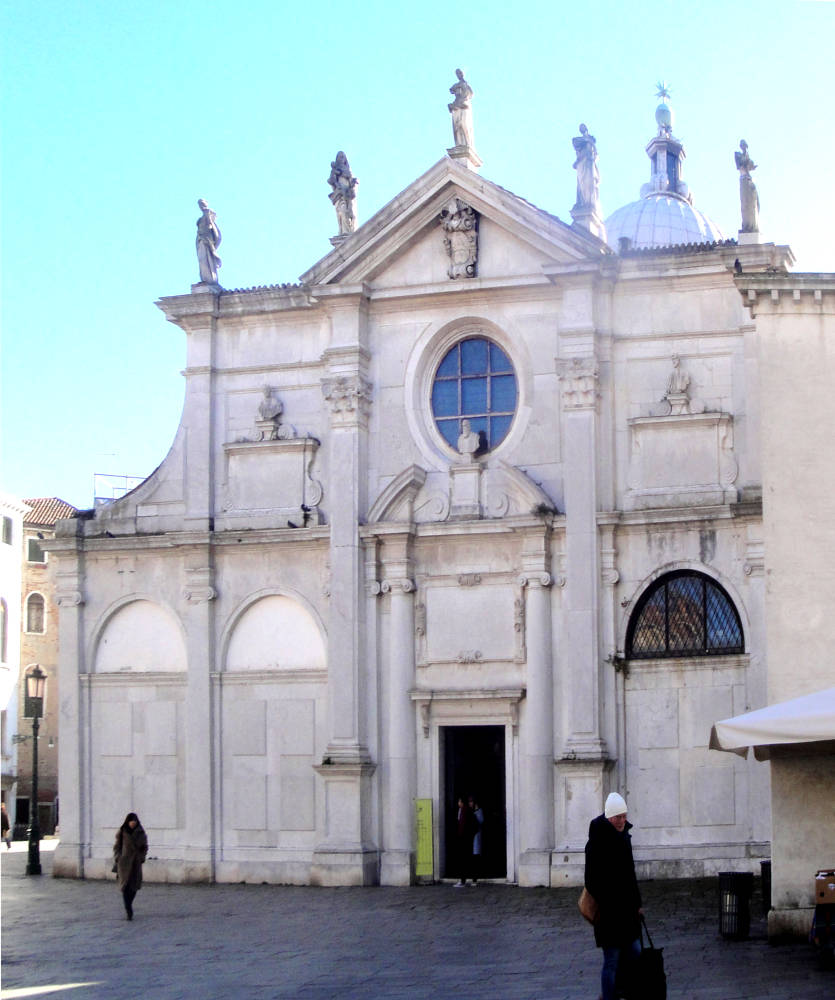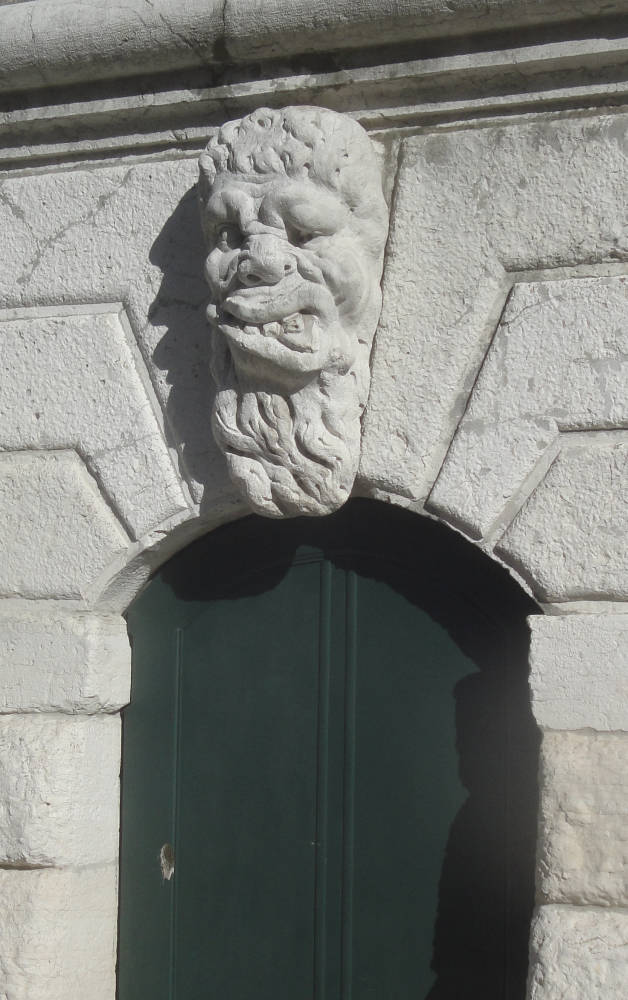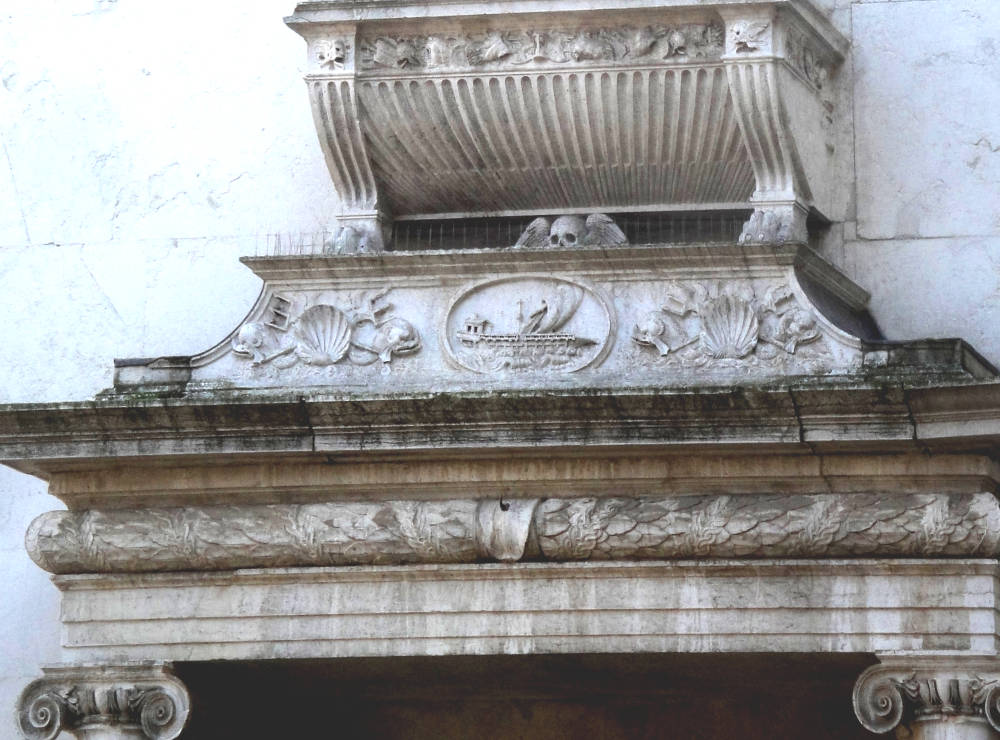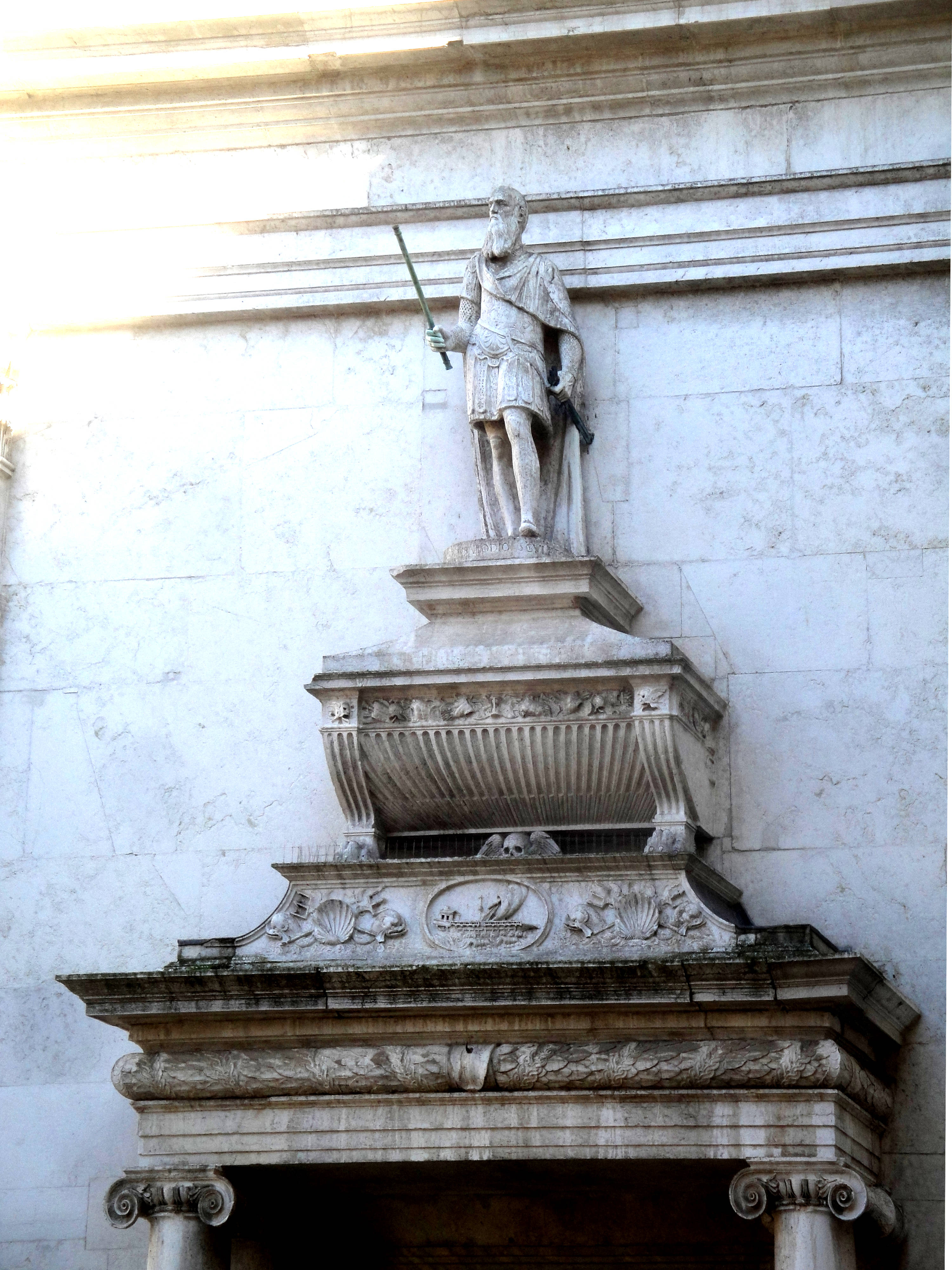Click on images to enlarge them.


In the third volume of The Stones of Venice Ruskin first mentions this church, describing the ancient festivals dedicated to “St. Mary the Beautiful,” which he takes as an emblem of earlier, now-vanished Venetian religious faith. He then tells his reader that the church is “still worth his pilgrimage, for he may receive a lesson upon it, though a painful one” (11.144). This lesson begins when “the traveller” looks “at the head that is carved on the base of the tower, still dedicated to St. Mary the Beautiful. A head,—huge, inhuman, and monstrous,—leering in bestial degradation, too foul to be either pictured or described, or to be beheld for more than an instant: yet let it be endured for that instant; for in that head is embodied the type of the evil spirit to which Venice was abandoned in the fourth period of her decline; and it is well that we should see and feel the full horror of it on this spot, and know what pestilence it was that came and breathed upon her beauty, until it melted away like the white cloud from the ancient field of Santa Maria Formosa” (145). (Twenty page later he adds, “In the head, described in the opening of this chapter, at Santa Maria Formosa, the teeth are represented as decayed” (11.162).
This ugly head functions for Ruskin as one of his Symbolical Grotesques, for it is not only a grotesque in the usual sense of the word but it is also an existing thing that functions as an informing symbol of Venice’s moral and spiritual state, for “This head is one of many hundreds which disgrace the latest buildings of the city, all more or less agreeing in their expression of sneering mockery, in most cases enhanced by thrusting out the tongue.”


Ruskin next turns to this church that, he says, has “one peculiarity in the late architecture of Venice, which will materially assist us in understanding the true nature of the spirit which is to be the subject of our inquiry; and this peculiarity, singularly enough, is first exemplified in the very facade of Santa Maria Formosa, which is flanked by the grotesque head to which our attention has just been directed. This façade, whose architect is unknown, consists of a pediment, sustained on four Corinthian pilasters, and is, I believe, the earliest in Venice which appears entirely destitute of every religious symbol, sculpture, or inscription; unless the cardinal’s hat upon the shield in the centre of the pediment be considered a religious symbol” (11.146).


Immediately beneath the casket on which Cappello stands, brandishing his sword, appears a winged skull! Beneath it in is an oval bas relief of a venetian galley a flanked by grotesque fish, shells, and tridents
Ruskin describes the secular decorations of the church, which like those on La Chiesa di Zobenigo (del Giglio), function as “a manifestation of insolent atheism”: “The entire facade is nothing else than a monument to the Admiral Vincenzo Cappello. Two tablets, one between each pair of flanking pillars, record his acts and honours; and, on the corresponding spaces upon the base of the church, are two circular trophies, composed of halberts, arrows, flags, tridents, helmets, and lances: sculptures which are just as valueless in a military as in an ecclesiastical point of view; for being all copied from the forms of Roman arms and armour, they cannot even be referred to for information respecting the costume of the period. Over the door, as the chief ornament of the façade, exactly in the spot which in the ‘barbarous’ St. Mark’s is occupied by the figure of Christ, is the statue of Vincenzo Cappello, in Roman armour. He died in 1542; and we have, therefore, the latter part of the sixteenth century fixed as the period when, in Venice, churches were first built to the glory of man, instead of the glory of God.” (11.146).


The statue of Vincenzo Cappello, in Roman armor.
More of Ruskin's Venice
- St. Mark’s Cathedral
- The Palazzo Ducale, Venice
- The Scuola de San Rocco
- On the Grand Canal
- Leaving the Grand Canal
- On the way to Venice from the mainland
- Venice: Details and Corners
Photographs 2019 and 2020. [You may use these images without prior permission for any scholarly or educational purpose as long as you (1) credit the photographer and (2) link your document to this URL in a web document or cite the Victorian Web in a print one.]
Bibliography
Ruskin, John. The Works. Ed. E. T. Cook and Alexander Wedderburn. “The Library Edition.” 39 vols. London: George Allen, 1903-1912.
Wurman, Richard Saul [and Patricia Schultz]. Florence Venice Milan Access. New York: HarperCollins, n.d.
� �
Last Modified 30 March 2020